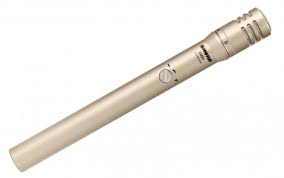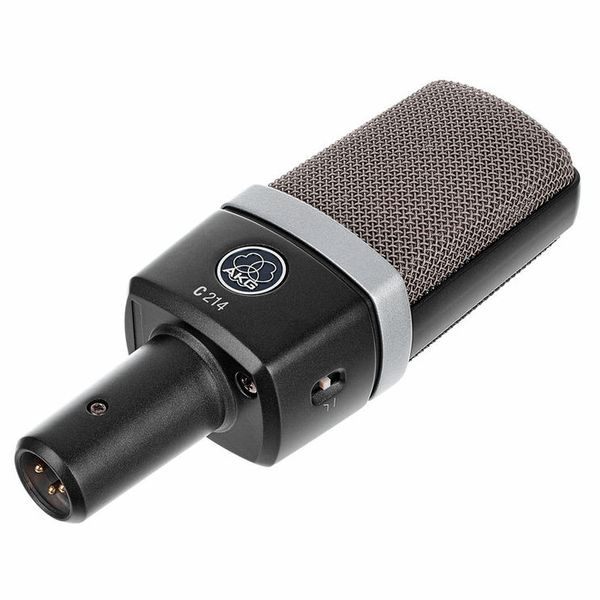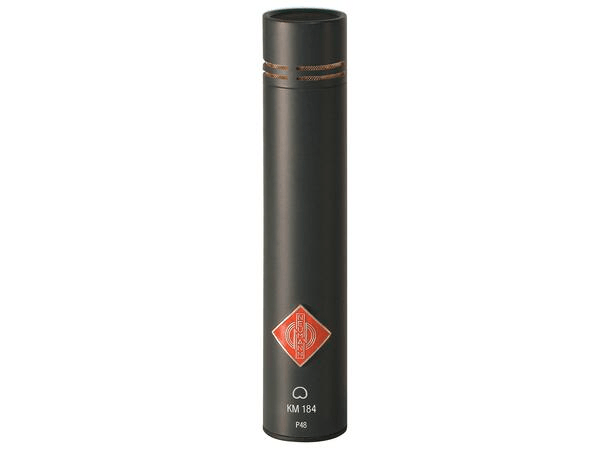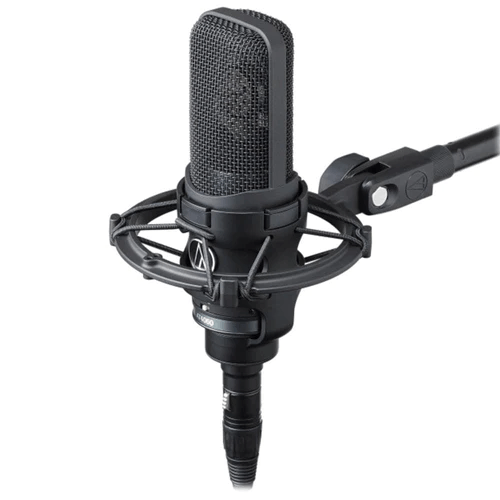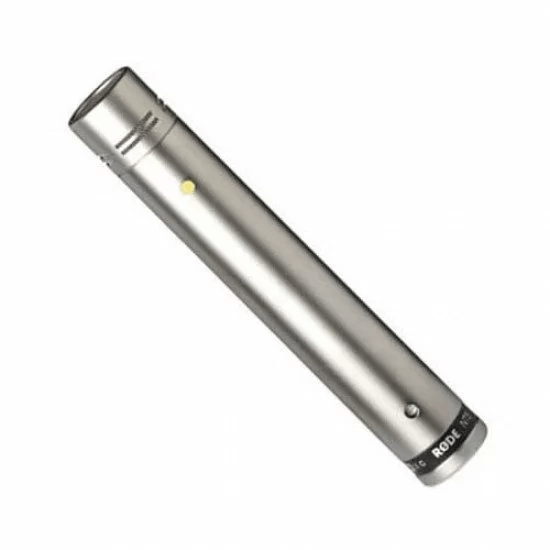When it comes to recording the nuanced tones of an acoustic guitar, choosing the right microphone can make all the difference. Whether you’re a professional musician looking to capture studio-quality audio or an enthusiast wanting to record covers for your growing audience, the perfect microphone can elevate your sound from good to great. In our quest to help you find that ideal match, we’ve compiled a list of the best studio microphones designed to complement the natural resonance of acoustic guitars. Discover how these top picks can enhance the clarity and warmth of your guitar recordings, giving your music the spotlight it deserves. When selecting the best studio microphone for recording an acoustic guitar, consider the following criteria: Now, let’s explore some of the best studio microphones that cater to these aspects and stand out for recording acoustic guitar. Please note that the prices mentioned are approximate and can vary depending on the retailer, location, or time of purchase. Additionally, the sensitivity values are provided in dBV/Pa, which is a common unit for microphone sensitivity, indicating the voltage a microphone produces given a certain sound pressure. Remember, choosing the best microphone also depends on personal preference and the specifics of your recording setup and style, so it’s a good idea to listen to samples or try the mics out in person if you can. Overview The Shure SM81-LC is a legendary player in the world of studio microphones, particularly when it comes to capturing acoustic instruments like the guitar. Its reputation is built upon decades of reliable performance in both studio sessions and live settings. The moment I laid hands on the SM81-LC, I could tell it was made to last, with a robust build that reassures you of its quality. Upon using it to record an acoustic guitar, the clarity it provided was astonishing. It captured the natural warmth and resonance of the guitar without introducing any unwanted coloration or noise. The microphone was exceptionally responsive to the nuances of fingerpicking and strumming, making it a versatile tool in the studio. The SM81-LC has a very flat frequency response, which means it accurately reproduces the sound that enters it. This characteristic is especially important when recording something like an acoustic guitar because you want the microphone to capture the true sound of the instrument without adding too much of its own character. Specs Pros: Cons: Price The Shure SM81-LC falls into the mid-to-upper price range for studio microphones suitable for acoustic guitars. You’ll often find it priced around $350 to $450, depending on the retailer and any current promotions. While it’s certainly an investment, for a microphone of this caliber, it’s well worth the cost considering the professional-quality sound it consistently delivers. The brilliance of the SM81-LC lies in its simplicity and its focus on doing one thing extremely well: capturing sound faithfully. As a studio microphone, it’s hard to fault it when it comes to recording acoustic guitars. Its price point reflects its professional status, but for those serious about their craft, the investment translates into a noticeable difference in recording quality. Overview: The AKG Pro Audio C214 sits comfortably in the sweet spot of price and performance among studio microphones aimed at acoustic guitar recording. My personal experience with the C214 has been nothing short of impressive. Unlike the more ubiquitous and neutral-sounding mics that often leave your guitar sounding flat, the C214 captures every nuance with a warm and smooth quality. The C214 has a design heritage shared with AKG’s legendary C414, which is a fixture in many professional studios. However, the C214 comes in as a more wallet-friendly option. From the first recording session, it became clear to me that this microphone is capable of delivering detailed recordings with a rich character. The cardoid pickup pattern suits acoustic guitar miking well, as it nicely focuses on the sound source while minimizing room noise and feedback. Specs: Pros: Cons: Price: Given its performance and quality, the AKG Pro Audio C214 strikes me as a smart investment. Prices can fluctuate based on retail and sales promotions, but typically it’s available in the mid-range bracket. It’s not the cheapest microphone you could opt for, but considering its performance, to me, the price feels justified. You’re buying a slice of pro studio quality without venturing into the realm of diminishing returns. In reviewing the AKG Pro Audio C214, I must say it presents an excellent value proposition for anyone serious about acoustic guitar recording. Its sound signature and reliability make it a well-rounded choice that would be a valuable addition to any microphone collection. Overview A standout option for those serious about capturing the essence of an acoustic guitar is the Neumann KM 184. This particular mic is a small-diaphragm condenser, renowned for its clarity and precision. It’s a part of Neumann’s KM 180 series, which is often the go-to for professionals in the recording industry. My experience with the KM 184 has always been memorable – it handles the rich, complex tones of an acoustic guitar beautifully, delivering an authentic sound that’s both crisp and full of character. The design is sleek and functional, allowing it to be easily positioned around your guitar during recording sessions. It exhibits a natural yet detailed sound reproduction, mainly due to its slight treble boost which perfectly complements the acoustic guitar. The cardioid pickup pattern is effective at isolating the sound source, which means less room noise and more of the pure guitar tones you crave. Specs Here, I’ll dive into the key features while sharing my insights: From this specifications list, the wide frequency response immediately stands out; it ensures that every pluck, strum, and nuance of your acoustic guitar is captured. The high max SPL means that even the loudest playing won’t cause distortion – a clear win for dynamic guitar work. Pros: Cons: Price The Neumann KM 184 sits at a higher price bracket, generally being a premium choice. You can expect to invest a significant amount for this level of quality. It reflects its professional-grade reputation and performance, and although it’s a serious investment, for a discerning user who wants arguably one of the best mics for acoustic guitar, I’d argue it’s worth every penny. In conclusion, if budget allows and you’re seeking a microphone that will do justice to the intricate sounds of your acoustic guitar, the Neumann KM 184 should be high on your consideration list. It’s a professional’s choice, crafted for those who can appreciate and require the finest audio reproduction in their recordings. Overview: When recording with the AT4050, there’s a certain openness in the sound that’s both honest and flattering to acoustic guitar tones. What’s impressive is its ability to handle high sound pressure levels, which means you can also confidently use it on louder sources without worrying about distortion. For a home studio or professional setup focusing on acoustic instrumentation, this microphone is a serious contender. Specs: Pros & Cons: Cons: Price: In my opinion, if you’re committed to capturing the true essence of an acoustic guitar and you have the budget for it, the AT4050 won’t disappoint. Its price reflects the quality and flexibility it offers, making it a worthy investment for someone serious about their sound. Overview The Rode NT5 is a compact, pencil-style condenser microphone that is often praised for its precision in capturing acoustic guitar performances. Known for its clarity and detailed sound profile, it is a go-to choice for musicians and sound engineers who need a reliable mic for studio work, especially when recording stringed instruments. Upon using the NT5, the first thing you’ll notice is how accurately it represents the acoustic guitar’s natural tones. It maintains that wooden resonance and string clarity that define the instrument’s voice. The NT5 comes as a matched pair, which is fantastic for stereo recording, allowing you to create that expansive, immersive soundstage that can make an acoustic guitar recording feel like a live performance. Specs The Rode NT5 is characterized by a cardioid polar pattern, which does a fantastic job of picking up sound from the front while minimizing noise from the sides and rear. This is especially useful in a studio setting where you want to focus on the guitar without capturing excess room noise. It has a frequency range of 20Hz to 20kHz, ensuring every nuance of your guitar’s sound from the lowest lows to the highest highs is captured. Furthermore, the NT5 can handle high sound pressure levels, so even if you’re an energetic player, this mic will keep up without distorting. Pros: Cons: Price Regarding pricing, the Rode NT5 matched pair is quite reasonable, especially when you consider that you’re getting two high-quality microphones. While prices fluctuate, you can typically find the pair available for around $400 to $450. This puts it at an attractive point, making it accessible for both up-and-coming and professional studios. Personal Opinions In my experience, the Rode NT5 delivers a performance that punches well above its weight class. This mic captures the acoustic guitar with such authenticity; you’d be hard-pressed to find a more honest reproduction at this price point. I appreciate the no-frills approach to its design – there are no unnecessary features or embellishments, just solid, consistent performance every time. The compact size of the NT5 is also a plus for me, as it allows for easy positioning and minimal interference with the player’s space. However, I must say, while its natural sound is generally a positive trait, those looking for a more colored or ‘hyped’ sound might need to couple it with some EQ adjustments during mixing. Overall, the Rode NT5 strikes an excellent balance between quality and affordability, making it a standout choice for anyone looking to record acoustic guitar in the studio. Whether you’re a home studio hobbyist or a professional engineer, the NT5 deserves serious consideration. In summary, finding the best studio microphone for your acoustic guitar involves considering your unique preferences and the acoustic characteristics of your recording space. Whether you opt for the warmth of a ribbon mic, the precision of a small-diaphragm condenser, or the versatility of a large-diaphragm condenser, the right choice will capture the richness and depth of your acoustic guitar’s sound. Experiment with the models that caught your eye from our list and embrace the one that harmonizes with your instrument and playing style, empowering you to create recordings that resonate with clarity and authenticity. Q1: What type of microphone is best for recording an acoustic guitar? Q2: Do I need a pop filter when recording acoustic guitar? Q3: Is it worth investing in an expensive microphone for my home studio? Electric Motor For Metering Pump Electric Motor For Metering Pump,Automatic Control Motor,Well-Designed Electric Motor,Alternating Current Motor Driver Jiangsu Hengchi Motor Technology Co., Ltd , https://www.hcemotor.com
Product Name Price (approx.) Type Polar Pattern Frequency Response Sensitivity Shure SM81-LC $350 Condenser Cardioid 20Hz to 20kHz -45 dBV/Pa AKG Pro Audio C214 $400 Condenser Cardioid 20Hz to 20kHz -34 dBV/Pa Neumann KM 184 $850 Condenser Cardioid 20Hz to 20kHz 15 mV/Pa Audio-Technica AT4050 $700 Condenser Multi-pattern 20Hz to 18kHz -36 dBV/Pa Rode NT5 $220 (per mic) Condenser Cardioid 20Hz to 20kHz -38 dBV/Pa Shure SM81-LC
AKG Pro Audio C214
Neumann KM 184 Studio Microphone for Acoustic Guitar
Audio-Technica AT4050
The Audio-Technica AT4050 is a condenser microphone that has earned its reputation as a versatile studio workhorse. I’ve found that it particularly shines when capturing the natural resonance and nuances of an acoustic guitar. Its smooth yet detailed character allows for the wooden warmth of the guitar to come through without being overshadowed by unwanted harshness or boominess.
Pros:
The Audio-Technica AT4050 generally retails around $700, which positions it as a mid to high-end studio microphone. Considering its performance and versatility, it presents a reasonable value for the serious musician or audio engineer.Rode NT5
Conclusion
FAQs
A1: Small-diaphragm condenser microphones are often recommended for recording acoustic guitars due to their ability to capture detailed sound with precision. However, large-diaphragm condensers and ribbon microphones are also popular choices for their distinctive warmth and character.
A2: Generally, pop filters are used to mitigate plosives in vocal recordings. They are not typically necessary when recording instruments like an acoustic guitar, unless you are simultaneously recording vocals.
A3: It depends on your budget and recording needs. High-end microphones can provide superior sound quality, but there are also many affordable options that offer great performance. It’s important to balance cost with the quality you need for your intended recordings.
